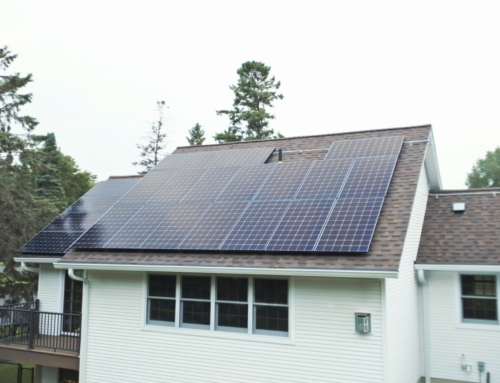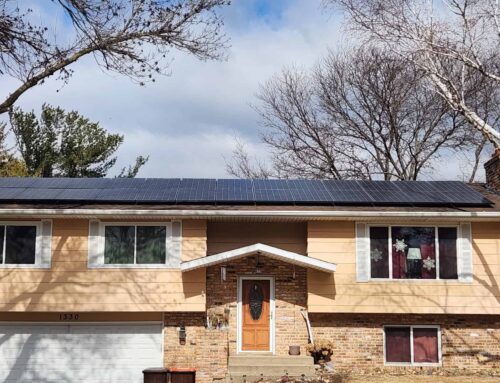If you have solar panels or are considering installing them, then you might assume that the electricity you send to the grid is going to be credited at the same price as your electricity. After all, you’re using your energy, which means you’re offsetting the energy you’d otherwise be buying, right?
The truth is, how much you get paid for the solar energy you generate often comes down to two very important figures. It comes down to the retail rate and the avoided cost rate. If you can take the time to understand the two, then this will help you to determine the overall ROI you can expect from your system.
Understanding the Retail Rate
The retail rate is the price you pay for electricity as a customer. This rate tends to cover the cost of generating your electricity. You will also pay for the cost of transmitting it over high-voltage power lines, going through your local infrastructure, and eventually to your home. You are also paying for the operational expenses of your utility as well. When you open your bill, you’ll notice your energy listed in kWh. This is the retail rate, and it shows things from your perspective as a customer. Because the retail rate covers the generation and distribution costs, it’s higher than the cost of simply buying the electricity. The retail rate compensates the company for producing the power, as well as for the cost of maintaining the system that makes sure the energy gets to your home, as it should.
Understanding the Avoided Cost Rate
The avoided cost rate is the estimated amount the utility would have spent to generate or buy the electricity that your solar system provides. The figure is based on wholesale prices, or it can be based on the cost of running a power plant. This works by supplying electricity when it’s needed, during peak times.
As you can expect, the avoided cost rate does not include the cost of transmission, nor does it include distribution costs. It also doesn’t cover administrative, utility profits, or expenses. When you take into account all of this, you’ll notice that the cost is lower. In a lot of markets, it can be a fraction of what you’d be paying for your bills.
Why Do You Need to Understand the Difference in Rates?
The difference in rates is so important because it determines how much financial credit you will receive for the electricity you export. If a utility credits a solar customer at the retail rate, then solar power offsets the whole cost of the electricity you would consume. This gives you more savings and shortens how long it is going to take for your solar system to pay for itself.
As utilities adapt to the growing demand for solar, grid management needs, and changing energy markets, a lot of them are moving away from this and instead to paying for energy at the avoided cost rate. This approach is also called net billing. For models like this, people pay retail rates for the energy they use, but at the same time, are only credited for the avoided cost rate for the energy generated.
This creates a big gap between the value of solar energy generated and the excess sent to the grid. The avoided cost rate is lower, and as a result, the financial returns from your solar system are reduced. This gap will also affect the economics of your system sizing and the decision you make as to your battery storage.
How Utilities Calculate These Rates
Utilities determine the retail rate based on a large number of factors. This can include the cost of maintaining infrastructure and customer service. Rates are also divided into components, including energy charges, demand charges, and even fixed fees. You will also want to take note that rates vary widely by region, and sometimes they change with the time of day. This is especially in areas that use time-of-use pricing structures.
Avoided cost rates are calculated based on what it would cost for the utility to acquire electricity if your system were not supplying it. It usually comes down to the wholesale market price. These prices fluctuate as well, so you should note that the avoided cost rate can change either seasonally or annually. It also makes solar energy less profitable during certain months.
Investing in Solar? Here’s What You Need to Know
If you are a homeowner or business and you are investing in solar, then the rate at which you are credited can make a huge difference to how much money you are able to make. Under the retail rate, solar users can get the full amount for the electricity they produce, meaning you’ll have a shorter payback period as well as a higher overall return on your investment. You will also have greater savings on your energy bills.
When you are credited at the avoided cost rate, solar owners normally see lower compensation for excess generation. This may require adjusting systems so that they match onsite consumption or even seeking other incentives so that project economics can be improved. Understanding which model applies to you is so important before you make the leap and invest in solar. If you are in a region where net billing with avoided cost is the norm, then you may want to think about whether or not this is going to affect your payback and returns.
You also need to think about whether or not you are making a good decision by investing in solar right now, as if you are doing it to make a profit from the energy you generate, then this might not be as feasible. If you are investing in it to try and power your home and reduce your reliance on the grid, however, then this can be a wise strategy for those who want to secure their energy future.






